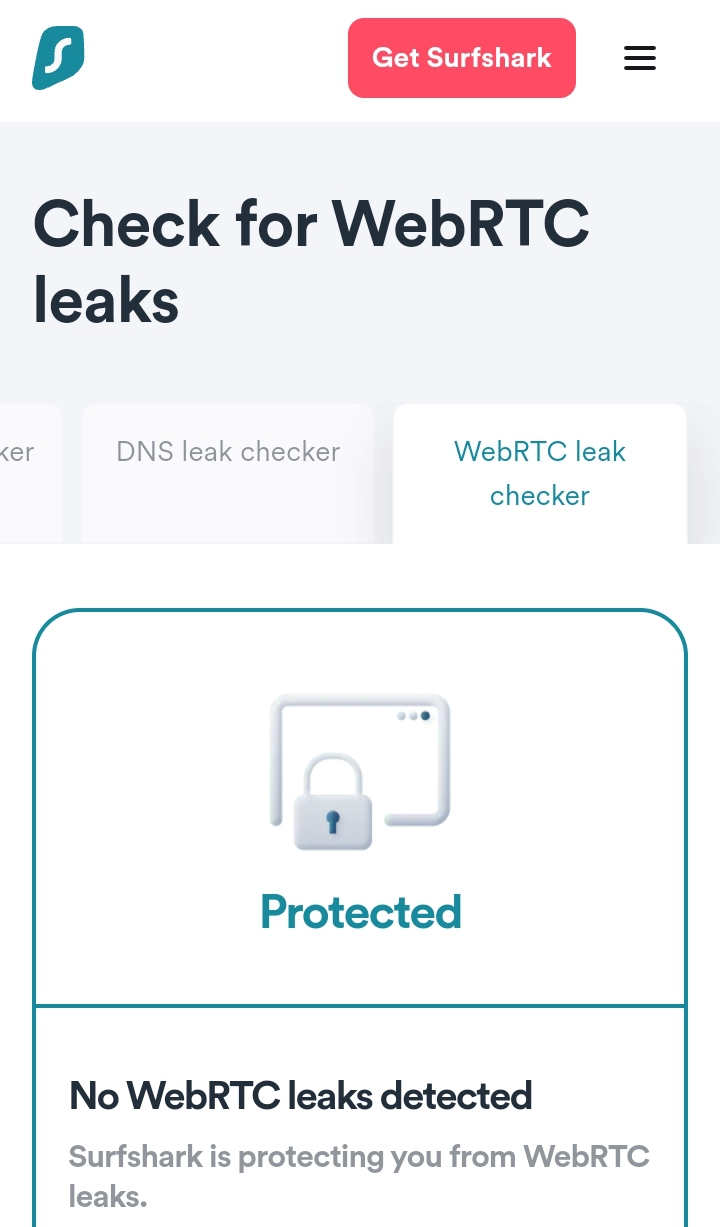Don’t Get Fooled by Fake Order Scams: How to Spot Them and Keep Your Money Safe |2023|
Fake Order Scams are a serious threat to individuals and businesses alike.
Scammers are now employing sophisticated tactics to trick people into parting with their money or personal information, so it’s important to be aware of the common signs of a fake order scam and take steps to protect yourself.
Today, we’ll focus on how to identify and protect yourself from fake order scams.
We’ll provide an overview of the different types of fake order scams, describe common tactics and techniques that scammers use, and offer tips on how to stay safe.
That’s not all, we’ll also share some real-life examples of high-profile order scams and discuss the negative impact that these scams can have.
Moreover, we’ll provide advice for businesses on how to safeguard their operations and customers.
Read Also: Printer support Scams and how you can avoid falling a Victim
What are Fake Order Scams?
A fake order scam is a type of online fraud where scammers trick individuals or businesses into paying for goods or services that they never receive.
They do this by posing as legitimate companies or individuals and creating fake orders that seem authentic.
One example of a fake order scam is when a scammer creates a phony e-commerce website that looks like a legitimate online store.
They may list products for sale at unrealistically low prices, hoping to lure in unsuspecting buyers.
When a buyer places an order, the scammer will either take their money and disappear or send a fake product or no product at all.
Another example is when a scammer sends a fake invoice for a service or product that the recipient did not order or receive. The invoice may look legitimate, complete with a company logo, contact information, and itemized charges. However, when the recipient pays the invoice, the scammer disappears with the money.
These scams can also occur through phishing emails or phone calls.
A scammer may pretend to be a legitimate company representative and ask for payment for an order that the recipient did not place. They may use pressure tactics or threaten legal action to convince the victim to pay up.
Overall, fake order scams are designed to deceive victims into paying for something they will never receive, and it’s important to stay vigilant and informed to avoid falling victim to these scams.
Fake order scammers use a variety of tactics and techniques to deceive individuals and businesses into sending them money or personal information. Here are some common ways that scammers operate:
Impersonation: Scammers may impersonate legitimate companies or individuals to gain the victim’s trust. They may use a company’s name, logo, or website design to create a fake order that appears authentic.
Urgency: Scammers often create a sense of urgency to pressure the victim into making a quick decision. They may use phrases like “limited time offer” or “act now” to make the victim feel like they need to act quickly.
Social engineering: Scammers may use social engineering tactics to gain the victim’s trust or gather personal information. For example, they may pretend to be a friend or family member to trick the victim into giving them money.
Spoofing: Scammers may use technology to spoof phone numbers or email addresses to make it appear as though a legitimate company is contacting the victim.
Phishing: Scammers may use phishing emails or texts to trick the victim into providing personal information, such as their credit card number or login credentials. These emails may contain links to fake websites that look like legitimate ones.
False sense of security: Scammers may create a false sense of security by using language or logos that suggest the transaction is secure. For example, they may use phrases like “secure checkout” or include images of lock icons to make the victim feel safe.
Payment methods: Scammers may use unusual or non-standard payment methods, such as wire transfers or gift cards, to make it harder for the victim to recover their money once the scam has been detected.
By understanding the tactics and techniques that scammers use, individuals and businesses can take steps to protect themselves from fake order scams.
Fake order scams come in many different forms, and scammers are constantly coming up with new ways to deceive individuals and businesses. Here are some common types of fake order scams:
Phony e-commerce sites: Scammers create fake e-commerce websites that look like legitimate online stores. They may offer products at unrealistically low prices to lure in unsuspecting buyers. When a buyer places an order, the scammer may either take their money and disappear or send a fake product or no product at all.
Fake invoices: Scammers may send a fake invoice for a service or product that the recipient did not order or receive. The invoice may look legitimate, complete with a company logo, contact information, and itemized charges. However, when the recipient pays the invoice, the scammer disappears with the money.
Phishing scams: Scammers may use phishing emails or texts to trick the victim into providing personal information, such as their credit card number or login credentials. These emails may contain links to fake websites that look like legitimate ones.
Subscription scams: Scammers may offer free or low-cost trials for a subscription service, such as a magazine or streaming service, but then charge the victim for a full subscription without their knowledge or consent.
Gift card scams: Scammers may ask the victim to pay for a purchase using a gift card, which is more difficult to track and recover once the scam has been detected.
Fake check scams: Scammers may send a fake check for an order or payment, which the victim deposits into their account. The scammer then asks the victim to send a portion of the funds back to them, but the check ultimately bounces, leaving the victim responsible for the funds.
Impersonation scams: Scammers may impersonate a legitimate company or individual to gain the victim’s trust and trick them into paying for a fake order.
By being aware of the different types of fake order scams, individuals and businesses can take steps to protect themselves and avoid falling victim to these scams.
Fake order scams can be difficult to detect, but there are some signs that individuals and businesses can look out for to avoid falling victim to these scams. Here are some common signs of a fake order scam:
Unrealistic offers: Scammers may offer products or services at prices that are too good to be true. If an offer seems too good to be true, it probably is.
Poor website design: Scammers may create websites that look unprofessional or poorly designed. Look for spelling and grammatical errors, low-quality images, and broken links.
Unusual payment methods: Scammers may ask for payment using unusual or non-standard methods, such as wire transfers or gift cards. Be wary of any payment method that is not commonly used.
Lack of contact information: Legitimate companies will typically have a phone number, email address, or physical address listed on their website. If the website doesn’t provide any contact information or only has a contact form, it may be a fake website.
Urgency: Scammers may create a sense of urgency to pressure the victim into making a quick decision. They may use phrases like “limited time offer” or “act now” to make the victim feel like they need to act quickly.
Phishing emails or texts: Scammers may send phishing emails or texts that ask for personal information or direct the recipient to a fake website. These messages may contain spelling or grammar errors, or they may use an urgent tone to try to elicit a quick response.
Unrequested orders: Scammers may send unsolicited products or invoices for services that the recipient did not order or receive. If you receive an unsolicited order or invoice, contact the company to verify the order before making any payment.
By being aware of these signs of a fake order scam, individuals and businesses can take steps to protect themselves and avoid falling victim to these scams.
To protect yourself from fake order scams, it’s important to be vigilant and take steps to verify the authenticity of an order before making a payment. Here are some actionable tips and advice on how to stay safe from fake order scams:
Verify the authenticity of an order: Before making a payment, verify the authenticity of the order by checking the company’s website, contacting customer support, or doing a quick online search for reviews and feedback.
Use secure payment methods: Use secure payment methods, such as credit cards or PayPal, which offer fraud protection and can help recover funds in case of a scam.
Don’t give out personal information: Don’t give out personal information, such as your social security number or login credentials, to anyone you don’t trust or to websites that look suspicious.
Keep your software up-to-date: Keep your computer, smartphone, and other devices up-to-date with the latest security patches and software updates to protect against known vulnerabilities.
Use strong passwords: Use strong, unique passwords for each account and change them regularly. Consider using a password manager to securely store and manage your passwords.
Be cautious of unsolicited emails or calls: Be cautious of unsolicited emails or calls asking for personal information or requesting payment. If you receive an unsolicited email or call, do not provide any personal information or make any payments until you have verified the authenticity of the request.
Check your accounts regularly: Regularly check your bank and credit card accounts for any unauthorized transactions or charges. If you notice any suspicious activity, contact your bank or credit card company immediately.
By following these tips and advice, individuals and businesses can stay safe from fake order scams and protect their personal and financial information.
If you suspect you have been the victim of a fake order scam, it’s important to take action as soon as possible. Here are the steps you should take to report a fake order scam:
Contact your bank or credit card company: If you have made a payment to a scammer, contact your bank or credit card company immediately to report the fraud and dispute the charge.
File a complaint with the Federal Trade Commission (FTC): You can file a complaint with the FTC online or by phone at 1-877-FTC-HELP (1-877-382-4357). The FTC uses complaints to build cases against scammers and to inform consumer protection initiatives.
Report the scam to your local police department: File a report with your local police department or sheriff’s office. Provide as much information as possible, including the name of the company or individual involved, the amount of money involved, and any relevant documents or emails.
Contact the Better Business Bureau (BBB): You can file a complaint with the BBB online or by phone at 1-800-646-6222. The BBB works to resolve complaints between businesses and consumers and can help connect you with resources for resolving the issue.
Report the scam to the Internet Crime Complaint Center (IC3): You can file a complaint with the IC3 online at www.ic3.gov. The IC3 is a partnership between the FBI and the National White Collar Crime Center and works to investigate and prevent internet crime.
By reporting a fake order scam, you can help protect yourself and others from falling victim to these scams in the future. It’s important to keep records of any communications, transactions, or payments related to the scam, as these may be helpful in your report to the relevant authorities.
Fake order scams have become increasingly sophisticated and prevalent in recent years, and many high-profile examples illustrate the seriousness of this issue. Here are some real-life examples of fake order scams:
Amazon Phishing Scam: In this scam, scammers send fake emails that appear to be from Amazon, informing customers that there is a problem with their order and asking them to click on a link to resolve the issue. The link takes the customer to a fake website designed to steal their login credentials and personal information.
Fake Invoice Scam: In this scam, scammers send fake invoices or payment requests to businesses, often using the name and branding of a legitimate company. The fake invoice or payment request usually includes a sense of urgency to prompt the victim to make the payment quickly, and the payment is usually made to a fake bank account.
Online Shopping Scam: In this scam, scammers set up fake e-commerce websites offering low prices on popular products. The victim places an order and makes a payment, but never receives the product. The fake website is then shut down, and the scammer disappears with the victim’s money.
Gift Card Scam: In this scam, scammers impersonate a legitimate company and offer victims a gift card or reward in exchange for personal information, such as their credit card number or social security number. The scammers use this information to make fraudulent charges or steal the victim’s identity.
Fake Tech Support Scam: In this scam, scammers impersonate tech support representatives and offer to fix a non-existent problem with the victim’s computer or device. They may ask for remote access to the device or for payment for their services, which can result in the victim’s computer being infected with malware or their financial information being stolen.
These examples illustrate the range of tactics and techniques used by scammers in fake order scams and the importance of staying vigilant and taking steps to protect yourself from these scams.
Fake order scams can have a significant impact on individuals and society as a whole, both in terms of financial loss and a loss of trust in online transactions. Here are some of the negative effects of fake order scams:
Financial Loss: The most immediate and obvious impact of fake order scams is financial loss. Victims of these scams may lose money directly through fraudulent charges or payments, or indirectly through identity theft or other forms of financial fraud. In some cases, victims may also incur legal or financial fees in an attempt to recover their losses.
Loss of Trust: Fake order scams can erode trust in online transactions and undermine confidence in e-commerce as a whole. When consumers are exposed to a high volume of fraudulent activity, they may become hesitant to make online purchases, which can hurt businesses that rely on e-commerce.
Emotional Distress: The experience of falling victim to a fake order scam can be emotionally distressing, causing feelings of embarrassment, anger, and frustration. Victims may also experience anxiety or stress related to the financial implications of the scam.
Spread of Malware: Many fake order scams involve the use of malware or other forms of malicious software that can infect a victim’s computer or device. This can result in the loss of sensitive data or the compromise of personal information.
Societal Costs: The impact of fake order scams is not limited to individuals, but can also have broader societal costs. For example, law enforcement agencies may need to dedicate resources to investigating and prosecuting these scams, which can divert attention and resources from other criminal activity.
In conclusion, fake order scams can have a significant impact on individuals and society as a whole, and it’s important to take steps to protect yourself from these scams and report them if you fall victim. By staying informed and vigilant, we can help prevent these scams from causing further harm.
As businesses are also at risk of falling victim to fake order scams, they need to take proactive measures to safeguard their operations and customers. Here are some tips for businesses on how to protect themselves and their customers:
Implement Strong Security Measures: Businesses should ensure they have robust security measures in place to protect their websites, customer data, and payment systems. This can include using encryption technology, implementing multi-factor authentication, and regularly updating software and systems.
Educate Employees: Businesses need to educate their employees on how to identify and respond to potential fake order scams. This can include training on how to recognize suspicious orders or requests, and guiding how to report these incidents to the appropriate personnel.
Verify Orders: Businesses should have a process in place to verify the authenticity of orders, particularly those that are large or unusual. This can include confirming the shipping address or contacting the customer directly to confirm the order.
Use Secure Payment Methods: Businesses should encourage customers to use secure payment methods, such as credit cards or PayPal, which offer additional fraud protection. They should also be cautious about accepting payment via less secure methods, such as wire transfers or gift cards.
Monitor for Suspicious Activity: Businesses should regularly monitor their website and payment systems for suspicious activity, such as multiple failed login attempts or unusual orders. They should also have a plan in place to respond quickly to any potential security breaches or fraud incidents.
By taking these steps, businesses can help protect themselves and their customers from fake order scams, which can ultimately strengthen their reputation and build trust with consumers.
In conclusion, fake order scams continue to be a serious threat to individuals and businesses alike, with scammers using increasingly sophisticated tactics to trick people into parting with their money or personal information. To stay safe, it’s important to be vigilant and cautious when making online transactions and to be aware of the common signs of a fake order scam.
Some key takeaways from this article include:
Fake order scams come in many forms, including phony e-commerce sites, fake invoices, and more.
There are several signs to look out for, including unrealistic offers, poor website design, and unusual payment methods.
To protect yourself, it’s important to verify the authenticity of an order and use secure payment methods.
If you suspect you have been the victim of a fake order scam, you should report it to the relevant authorities.
Businesses can also take steps to protect themselves and their customers, such as implementing stronger security measures and educating employees.
Ultimately, staying safe from fake order scams requires a combination of awareness, caution, and action. We encourage readers to share this information with their friends and family to help spread awareness and protect others from falling victim to these scams.
Q1: What are fake order scams, and how do they work?
A1: Fake order scams are deceptive tactics employed by scammers to trick sellers into providing goods or services without actual payment. Scammers pose as legitimate buyers, placing orders and appearing genuine. Once the goods are shipped or services rendered, the scammer disappears without paying, leaving the seller at a loss.
Q2: How can I effectively spot fake orders to avoid falling victim to scams?
A2: Spotting fake orders requires vigilance. Look for red flags such as urgent requests for immediate shipment, unusually large order quantities, inconsistent or incomplete contact information, and requests to use alternative shipping methods. Be cautious if the buyer insists on deviating from your usual business practices.
Q3: What can I do to protect my money from fake order scams?
A3: To safeguard your money, it is essential to transact with trusted sellers and use secure payment methods. Regularly monitor your financial statements for any unauthorized transactions. Be cautious when sharing sensitive information online and avoid disclosing unnecessary personal details.
Q4: If I receive a suspicious order online, what steps should I take?
A4: If you receive a suspicious order, conduct due diligence before proceeding. Contact the buyer directly to verify their identity and intentions. Search for the buyer’s name or email address online to check for any reviews or complaints. Consult with your payment provider or marketplace platform for further assistance if needed.
Q5: What measures should I take to safeguard my personal information during online transactions?
A5: Protecting your personal information is crucial. Ensure you transact on secure websites with HTTPS encryption. Avoid sharing unnecessary personal information, such as your Social Security number or driver’s license details. Regularly update your passwords and be cautious of phishing attempts seeking to extract sensitive data.
Q6: What are some common tactics employed by scammers in fake order scams?
A6: Scammers often use various tactics to deceive sellers. These may include creating a sense of urgency to rush the order, sending fake payment confirmation emails, impersonating well-known companies, or exploiting vulnerabilities in online marketplaces.
Q7: What are the best practices for secure online transactions and avoiding fake orders?
A7: Secure online transactions by using reputable platforms and marketplaces. Verify seller credentials by researching their reputation, reading reviews and ratings from other buyers, and checking for verified seller badges if available. Double-check order details before proceeding, and use secure payment methods like PayPal or credit cards with fraud protection.
Q8: How can I protect myself from credit card fraud associated with fake orders?
A8: Protect yourself from credit card fraud by regularly monitoring your financial statements for any suspicious activity. If you notice any unauthorized charges, report them immediately to your bank or credit card issuer. Enable two-factor authentication for your online accounts and only provide your credit card information on secure and trusted websites.
Q9: What are some warning signs of phishing scams related to fake orders?
A9: Phishing scams often accompany fake order scams. Be wary of unsolicited emails requesting personal information or payment details. Look out for suspicious attachments or links within emails. Poor grammar or spelling mistakes can also indicate a potential phishing attempt. Pay attention to emails claiming an urgent need for your response, especially if they create a sense of alarm or urgency.
Q10: How can I verify the legitimacy of sellers to prevent falling victim to fake order scams?
A10: To verify seller legitimacy, conduct thorough research. Check the seller’s reputation by searching for customer feedback or ratings. Look for verified seller badges on marketplace platforms. Confirm the seller’s contact details
and business information provided. Consider reaching out to other buyers or sellers who have interacted with the seller to gather more information about their reliability and trustworthiness.
Q11: Are there secure alternatives to sharing credit card information for online purchases?
A11: Yes, several secure alternatives exist to protect your credit card information during online purchases. You can use virtual wallets or payment services such as PayPal, Apple Pay, or Google Pay, which act as intermediaries between your credit card and the seller, providing an extra layer of security. Additionally, prepaid cards or virtual credit cards can be used for one-time transactions to minimize the risk of exposing your actual credit card information.
Q12: What steps can I take to stay informed about the latest trends and tactics used in fake order scams?
A12: Staying informed is crucial to protect yourself from evolving scams. Keep up-to-date with news related to online scams and frauds. Subscribe to newsletters or follow reputable sources that provide information on the latest tactics employed by scammers. Participate in online forums or communities where users share their experiences and insights about avoiding fake order scams.
Q13: How can I report a fake order scam or seek assistance if I have been a victim?
A13: If you encounter a fake order scam or become a victim, it is important to report the incident. Contact your local law enforcement agency and provide them with all relevant information, including any communication records, order details, and payment receipts. Additionally, report the scam to the online platform or marketplace where the transaction took place. They may have dedicated channels or support systems in place to handle such incidents and assist you further.
Q14: Are there any additional resources or organizations I can turn to for guidance on preventing fake order scams?
A14: Yes, several resources and organizations can provide valuable guidance. Visit the websites of consumer protection agencies, such as the Federal Trade Commission (FTC), which offers educational materials and resources on identifying and reporting scams. Online security organizations like the Cybersecurity and Infrastructure Security Agency (CISA) also provide tips and best practices to enhance your online safety.






